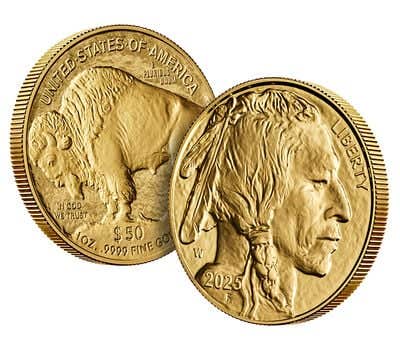Historical money definition outdated
I see that it is again time to correct misconceptions about the present-day nature of money.
This article was originally printed in the latest issue of Numismatic News.
>> Subscribe today!
I see that it is again time to correct misconceptions about the present-day nature of money held by C. David Eagle of Corcicana, Texas, (Letters, May 18, 2010), and now Donald Markay of Fargo, N.D., (Viewpoint, June 22, 2010).
I believe it is clear that both gentlemen’s errors come from an inability to recognize a fundamental transforming moment (what the vernacular calls “game changing”) in economic history. That’s no crime; most people recognize these moments only after many decades or centuries of reflection. Such moments are marked by an event so utterly transformational that virtually nothing that came before them matters much any more, at least in the relevant subject.
Examples? Personally, the birth of one’s first child. To the world’s Christians, the execution and resurrection of Jesus. To the relationship between royalty and their subjects, the signing of the Magna Charta. To the power relationship between the federal and state governments, the American Civil War and the 14th Amendment. To the political rights of racial minorities, the Voting Rights Act of 1965. In all of these cases, what the affected people previously “knew to be true” changed forever, never to be revisited again for much other than historic curiosity.
I submit that the creation of a near-universal free, openly traded currency exchange market in the early 1970s was no less a transforming moment. It changed forever the fundamental nature of money. That is why I do not find arguments based on “2,000 years of history” persuasive. The “world of money” has simply been changed too radically by that single event. And now with China promising to allow its yuan to float, the transformation may soon be complete.
Mr. Eagle asked me about, and Mr. Markay told me about, a definition of money. While both are spot on to the classical definition, I submit it is no longer valid, and hasn’t been for most of two generations now. Decades of negative real interest rates should have proven that. But time spent defining one’s terms is seldom wasted, so here goes. I have noted the key attributes of modern-day money with numbers in parentheses.
“Money” is simply (1) a medium of exchange which can be used (2) for exchange in a given geographic area in (3) the common ordinary commerce (4) without first exchanging it into something else at ‘(5) a value that will be vouched for by the relevant civil authorities.
That’s it, nothing more nor less. No other attribute is needed, and all five are essential. Gold and silver fail on at least points 3 and 5, and more in most cases. Mr. Markay will immediately notice there is nothing in there about a “store of value,” a former monetary attribute that has been intentionally abandoned for almost 40 years. We cannot change facts by whining about them. Yes, Mr. Eagle, this means that I reject the very notion that there could ever be such a thing as “natural money.” I have no idea what such a thing might mean in a modern-day context. Go ahead and lament the fundamental change in the nature of money all you like, but ignore it at your own peril. “Store of value” is no longer an attribute of money, but rather one of “investments.” I thought we all knew that.
The keen observer will correctly note that by my definition, a one-ounce gold Eagle is worth, as money, $50, not a number somewhat north of $1,200. That is a correct and intentional interpretation. The coin is worth the higher figure only as a commodity. It may rise or fall tomorrow.
To those who object to the notion that gold’s value may fall or even crumble, I direct you to the interval of 1980-2000, all of it since fiat currencies were universal. Gold’s value will indeed even “crash” again, if and when common stocks again start to look like safe investment bets going forward. The “gold bugs” believe we are on the verge of hyper-inflation, and we may be, but deflation is also being seriously worried about by economists right now. And if deflation ever did take hold, I’d hate to be holding much bullion. It could get ugly out there. Bullion is high now only because inflation fears outweigh deflation fears, and equity return rates are unimpressive. If either changes, gold will retreat, and greatly. I am a net seller of bullion at these levels, not a buyer, except to keep my year sets current.
By the way, I am aware my viewpoint on this may be a minority one among the numismatic “old guard.” I’m entirely OK with that. I believe they’re wrong. Frequent letters demonstrate that much of our “old guard” is out of touch on many issues, from the condition of “uncirculated” to the whole concept of “market grading.”
One closing note to Mr. Eagle, who correctly surmised that my degree is not from George Mason University, founded in 1972. He’s right; it’s from Franklin & Marshall College, founded in 1787. Perhaps the additional 185 years of history has taught us the wisdom to keep our economics department from intermingling gratuitously with our history, political science and religion departments. Perhaps George Mason U. should give it a try. I find it odd that GMU supposedly teaches the virtues of “free market economics” everywhere but apparently in currency valuations. F&M students are taught not to co-mingle our core dispassionate economic analysis with political ideologies. Economics too tinged with ideology, or an excessive regard for inapplicable history, or a near-religious attachment to a particular commodity, all lead to bad public policy. For an example, see a Ron Paul platform or a letter from either of the above-referenced gentlemen.
V. Kurt Bellman is a hobbyist from Lancaster County, Pa.
Viewpoint is a forum for the expression of opinion on a variety of numismatic subjects. The opinions expressed here are not necessarily those of Numismatic News. To have your opinion considered for Viewpoint, write to David C. Harper, Editor, Numismatic News, 700 E. State St., Iola, WI 54990. Send e-mail to david.harper@fwmedia.com.
Coin Presentation Case by Lighthouse
Display your collection in style! Presentation case in mahogany wood grain finish. Designed for slabs (PCGS and NGC). Holds 24 slabs in 3 trays!
More Coin Collecting Resources:
• Subscribe to our Coin Price Guide, buy Coin Books & Coin Folders and join the NumisMaster VIP Program









